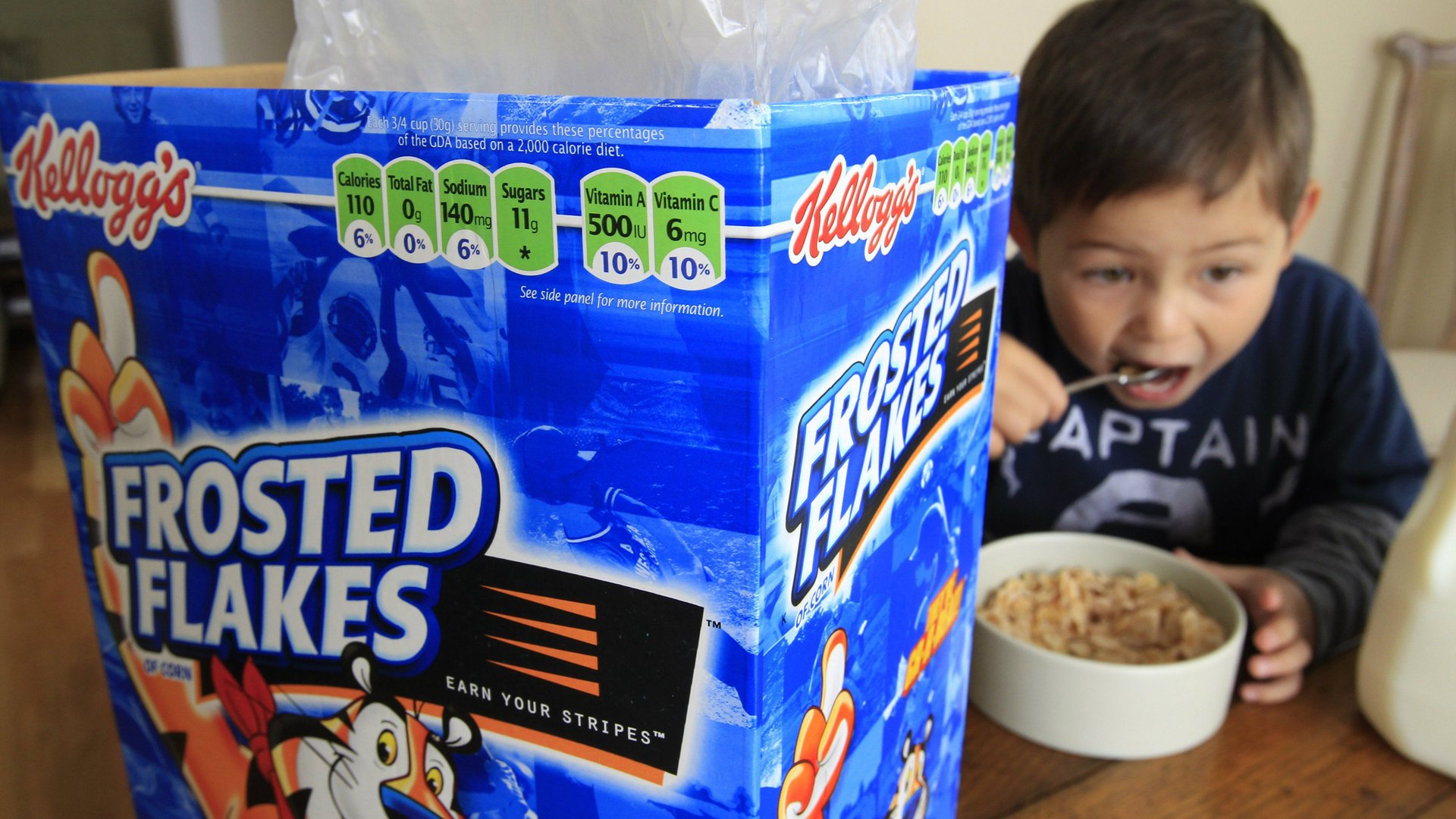There’s an alarming difference between the way adults and children react to junk food commercials
Add this to the list of benefits of a DVR: Yet another study confirms that commercials selling soda, sugar cereal, and other unhealthy foods are extremely effective on the children watching them, making the fast-forward button a valuable tool in shaping a child’s eating habits.


Add this to the list of benefits of a DVR: Yet another study confirms that commercials selling soda, sugar cereal, and other unhealthy foods are extremely effective on the children watching them, making the fast-forward button a valuable tool in shaping a child’s eating habits.
In a study published this month in the American Journal of Clinical Nutrition, researchers from the University of Liverpool in the UK and the University of Wollongong in Australia conducted a meta-analysis, using data from 18 earlier studies on the impact of junk-food advertising on calorie intake. Each of the examined studies involved manipulating the amount of exposure to advertising and then measuring concurrent and later eating. For adults, the researchers found, watching commercials translated into “small-to-moderate” increases in the amount of food consumed. But for children, “acute exposure” to food advertising shown in the experiments “significantly increases subsequent food intake,” the analysis found.
While the researchers caution that there is still a lot of variability—the same commercial will likely affect a 5-year-old differently than it would a 12-year-old, for example—they also point out that “almost all children in Westernized societies are exposed to large amounts of unhealthy food advertising.”
As global obesity numbers continue to rise, including among children, the voices calling for policies restricting junk-food advertisements are getting louder. No longer just the provenance of advocacy groups like the Center for Science in the Public Interest, warnings are now coming from places including the World Health Organization, which put out recommendations in 2010 on the marketing of food and beverages to children. A controversial UK government report released in October 2015 also argued in favor of some advertising restrictions.
Meanwhile, the latest Brazilian dietary guidelines include advice “to be critical of food ads [because] publicity’s goal is to sell, not to inform or educate the consumer.” And in the US, first lady Michelle Obama has publicly discussed the issue, calling the industry out during a 2010 speech at the Grocery Manufacturers Association. “Parents are working hard to provide a healthy diet and to teach healthy habits,” she said then, “and we’d like to know that our efforts won’t be undermined every time our children turn on the TV or see a flashy display in a store.”
In the meantime, parents might want to set their DVRs accordingly.